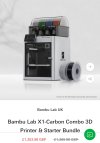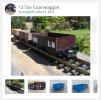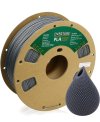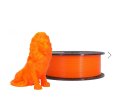It depends entirely on budget. Let's go top of the range first. I recently purchased a Bambu lab Carbon X1 and an AMS unit which holds 4 rolls of filament. Total cost was £1,353.98 and they throw in some test spools of filament to get you going.

It's capable of printing up to 16 colours simultaneously and is the most "fire and forget" solution out there.
It has an optional upgrade called an AMS unit which holds 4 spools of filament which the printer automatically loads and unloads to give you 4 colour printing.
If you want 16 colours simultaneously you need another 3 AMS units.

There is no coding or construction required. I was up and running in less than half an hour.
The filament from Bambu Lab even has RFID chips built into the spool so the printer automatically recognises the filament type and colour and imports the print settings like temperature, flow etc.
I can guarantee with the DIY hands on attitude I've already seen on here that anyone could use it. Imagine a 3D printer built by apple.
It calibrates itself, will load and unload material, has LIDAR to check the first layer on the print bed and will continually monitor the print and stop itself if it detects a problem.
Modelling shouldn't be a barrier either with many free models available online. Just download them for free from Thingiverse , Printables or other sites, open up in their software, select you colour/material and hit print.
Fancy some extra rolling stock? Check out these coal wagons from Thingiverse:
This is a 1/32 scale "12 ton coal wagon" for G scale (45mm) garden railways.It is a remix of the open freight car 1:32 scale gauge 1 by UTJTrain, but because I work in 123D, I had to re-draw some of the parts.The body prints well if you use PLA, but attempts to print in ABS so far have resulted...

www.thingiverse.com

Maybe you want a whole custom loco?
Printables has this awesome looking example:

Quite often the only extra information you need is if support needs to be enabled and the designer usually lists the material used such as PLA or ASA with the material settings. This comes in to play when you have parts that have overhangs as due to the additive process of printing layer by layer, a 3D printer can of course not print in midair. (There are actually now ways to do this but let's not get into that now)
Of course you unlock the full potential with separate 3D design modelling software such as tinkercad, SketchUp, SOLIDWORKS etc but there's already plenty out there ready modelled to print.
The other most user friendly complete solution would be from PRUSA. Their MK4 is also an excellent printer but at just over £1k it's hard to recommend over the Bambu lab Carbon X1. It's still an excellent printer but getting the X1 without the AMS puts these in direct competition. The build volume is also smaller at 250x210x220mm

Bambu Lab also make a stripped down version of the X1 - the P1P:

It lacks the enclosed build volume of the X1, the lidar scanner and the touchscreen but that brings the price down to £550.
Enclosed heated build chambers only come in to play when printing higher performance materials such as ABS which can warp and detach from the print bed. The easy way round this is to use ASA which has basically the same materials properties as ABS which I can print just fine on my open Ender 5 plus.
The P1P has the same build volume as the X1 of 256x256x256mm which should be fine for most users. At £550 I'm not aware of any printer that comes close in terms of capabilities. Add to that, you can chose to upgrade it with panels to enclose it, upgrade the cooling fan and that it's even compatible with the AMS units,
it's the one to buy if you're not too fussed about exotic materials that require a heated build chamber.
Filament
Something I haven't mentioned up to this point is the filament. I strongly recommend buying the filament from the manufacturer of the printer. Both PRUSA filament and Bambu Labs filament have been extensively tested with their machines and their software has the settings ready to go.
Ive run several different filaments from various manufacturers in my Ender 5 plus and this has caused plenty of issues. The grey PLA from Overture for example is dirt cheap at £18 for a 1kg spool but needs to have temperature and flow (the amount of filament pushed through the extruder) tinkered with substantially to get good results.

By comparison buying 4 spools directly from Bambu Labs works out roughly the sameafter shipping.

I'll still buy the cheap filament for the Ender 5+ but if you're looking at your first printer this is fantastic news for you.
Prusa's own PLA is also price competitive at £27 per 1kg spool

This is sounding a little one sided so I'll say this. A friend of mine runs a print shop. He started on Prusa printers and it's pretty much all he uses now having just bought a MK4.
I visited him yesterday and it's an excellent machine. Many professional printers run stables of exclusively Prusa printers due to their first rate support, excellent instructions and bomb proof hardware. They are an established brand that are only going up and are completely open sourced compared to the walled garden Bambu Labs approach.
Being completely open aource you could for example order a cheap Prusa MK3S kit from AliExpress for £275 Vs the "same" kit direct from PRUSA at £635.

You can even use Prusa's own extensive highly detailed manual to assemble your Chinese clone kit but I couldn't tell you if the quality of the parts will be any good. I can pretty much guarantee it won't even be close.
But this is getting a loooooong way off entry level user friendly.
Conclusion
Yes, there are definitely cheaper options out there. But these represent a gamble. Out of the box they may work just fine but the learning curve is a lot steeper. If there are issues, due to the multitude of settings, pinpointing which value needs to change can be a confusing lengthy frustrating process
These settings will also vary from printer to printer and with environment. You could look online, copy the exact same settings from someone using the same printer and material and get completely different results. If you're new to printing, it's exactly these kinds of headaches that can kill your enthusiasm. In my opinion it's just not worth the hassle. Been there done that, got the T-shirt. Now I just want it to work rather than having to work on it.
Edit: I feel the need, the need for SPEEEEEED
I can't believe I forgot one of the most important factors:
speed.
Having now experienced the blistering speed of the core XY Bambu Labs printer I don't think I can go back. It prints the same part as the ender 5 plus in a quarter of the time and could go faster (but this can compromise the strength of the final part)
Where it comes into play is prototyping and iteration. I can make a print, have it less than half an hour later, make changes and go again.
There is a great explanation of what core XY is here:
If you are building a CNC machine, a 3D printer, or even a plotter, you have a need for motion in both the X and Y directions. There are many ways to accomplish this, for example, some printers mov…

hackaday.com
Disclaimer
I am in no way shape or form affiliated with Bambu Labs. I'm just a happy customer.



















